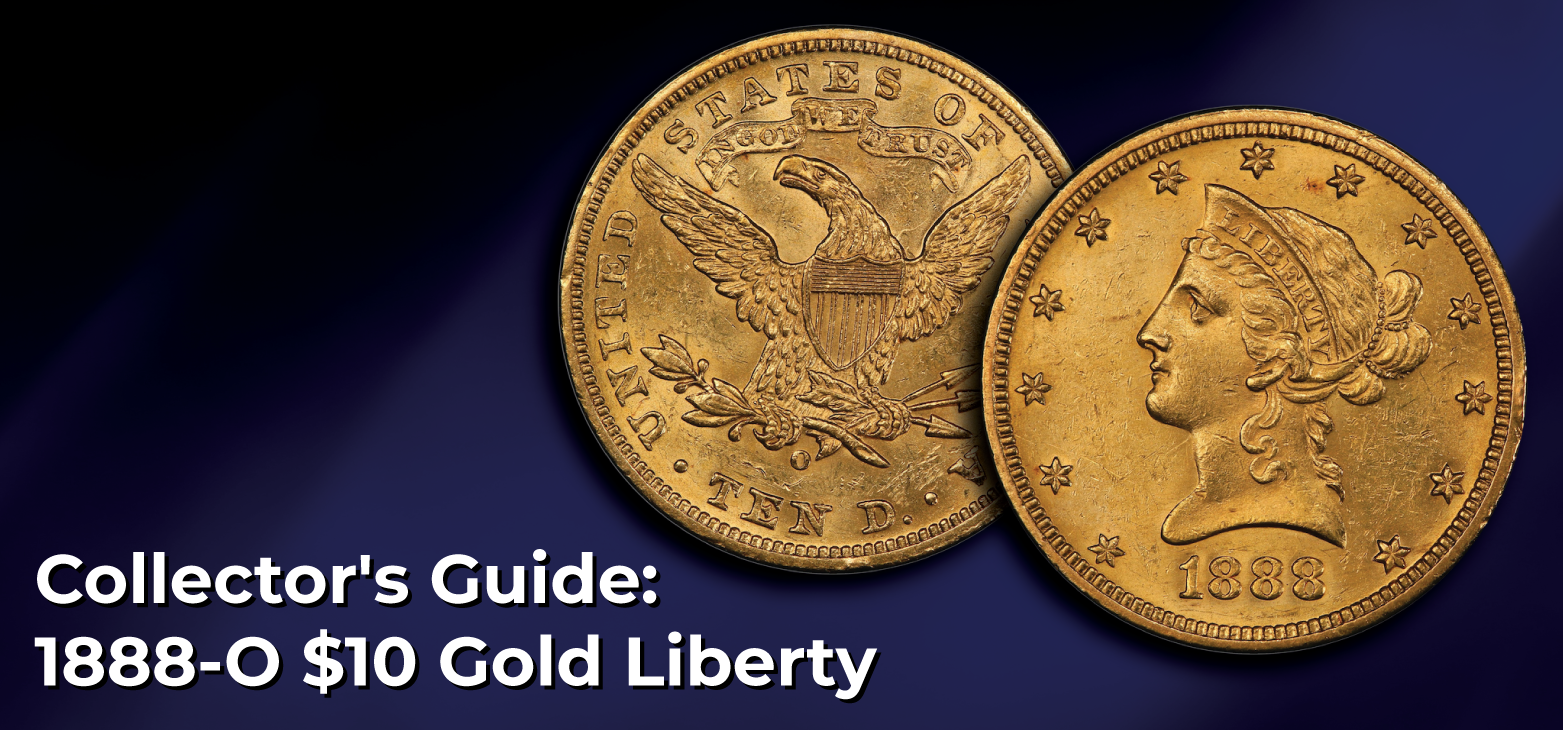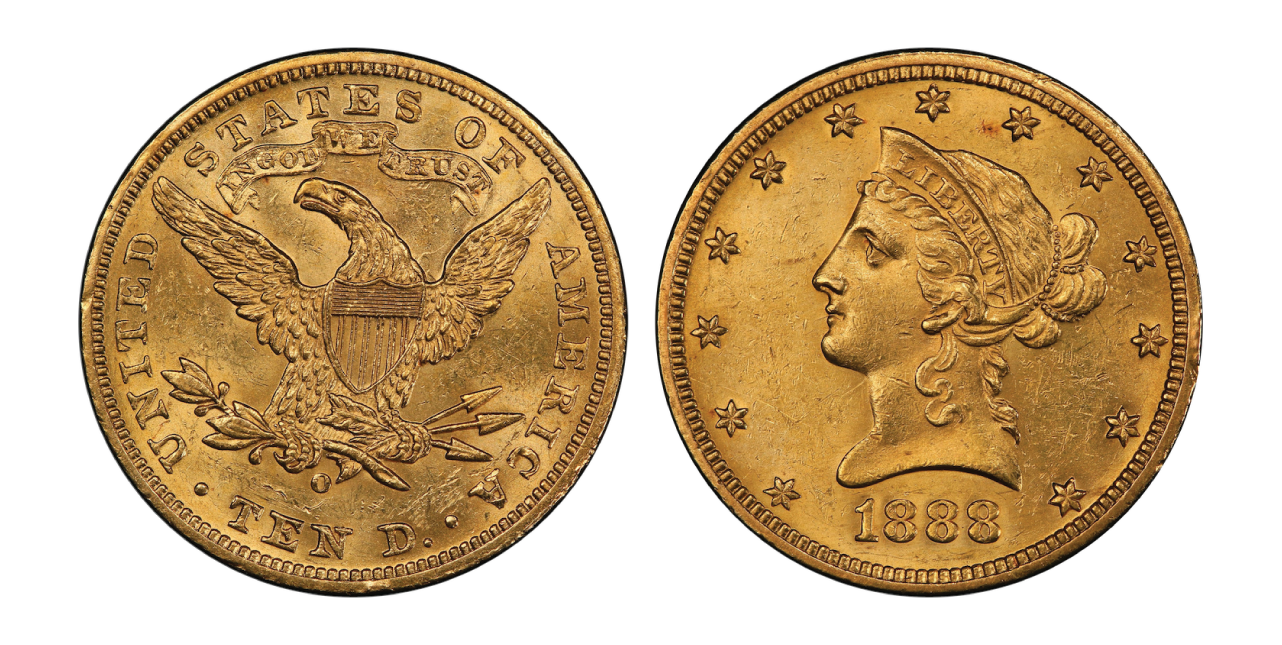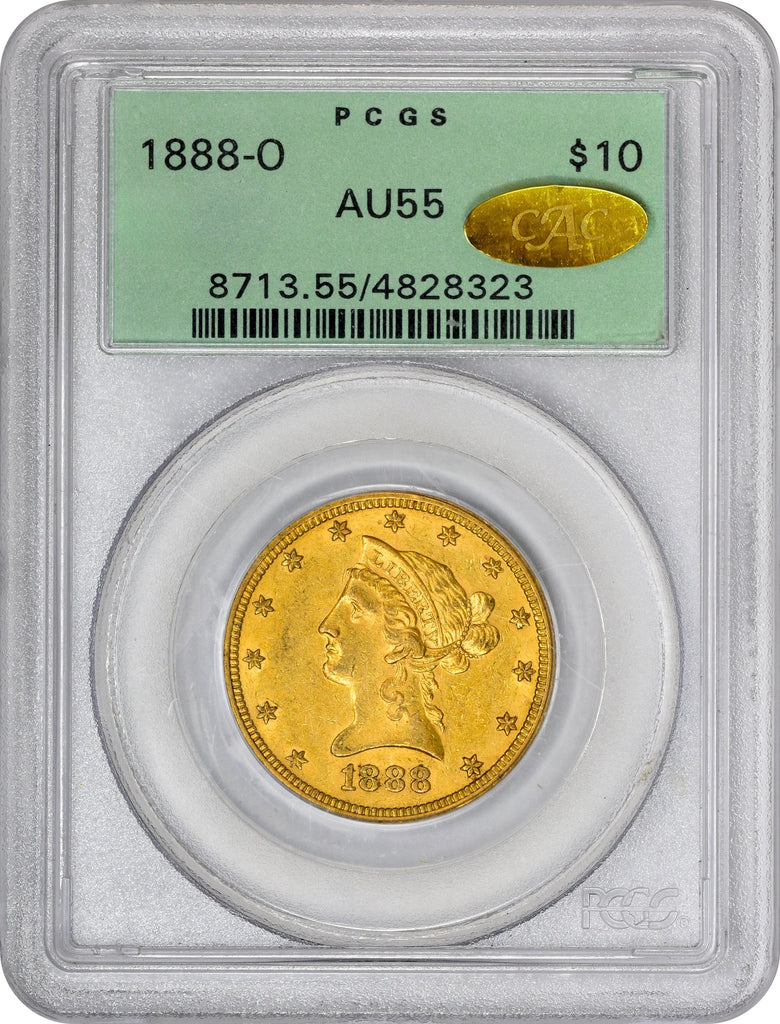Collector's Guide: 1888-O $10 Gold Liberty
Post by: Walt Durham
in Pre-1933 Gold

Collector's Guide: 1888-O $10 Gold Liberty
Introduction
The 1888-O $10 Gold Liberty, also known as the Eagle, is a prized possession for numismatists. Struck at the New Orleans Mint, this coin features the classic design by Christian Gobrecht and holds historical significance, making it a sought-after piece among collectors. This guide will delve into the coin's background, key features, rarity, grading, and tips for collectors.
Historical Background
The $10 Gold Liberty series was minted from 1838 to 1907. The 1888-O issue stands out due to its relatively low mintage and the unique circumstances of its production at the New Orleans Mint, which was primarily known for producing silver coinage. The mintage for the 1888-O was only 21,335 coins and the total known to survive today between both major grading services is less than 1,400 coins. This makes the 1888-O Eagle a rare find today.

Key Features
Obverse
- Design: Lady Liberty facing left, wearing a coronet inscribed with "LIBERTY."
- Stars: Thirteen stars encircle Liberty, representing the original thirteen colonies.
- Date: The year 1888 is inscribed below the bust.
Reverse
- Design: A heraldic eagle with a shield on its breast, holding an olive branch and arrows in its talons.
- Inscriptions: "UNITED STATES OF AMERICA" and the denomination "TEN D." are inscribed around the eagle.
Rarity and Value
The rarity of the 1888-O $10 Gold Liberty significantly impacts its value. Due to the low mintage and the fact that many coins were melted down or lost, surviving specimens are highly prized. The coin's value is influenced by its condition, with well-preserved examples fetching higher prices.

Grading
Grading is crucial in determining the value of the 1888-O $10 Gold Liberty. Coins are evaluated based on their condition, which is graded on a scale from Poor (P-1) to Mint State (MS-70). Key grading criteria include:
- Wear: The amount of wear on the high points of the coin.
- Luster: The brightness or dullness of the coin's surface.
- Strike: The sharpness of the design details.
- Surface Marks: The presence of any scratches, dings, or other marks.
Common Grades and Their Values
- Fine (F-12): Considerable wear but major details are clear.
- Extremely Fine (EF-40): Light wear on the highest points, with all major details sharp.
- About Uncirculated (AU-50): Slight traces of wear with nearly full details.
- Mint State (MS-60 and above): No wear, full mint luster, may have minor surface marks.
Tips for Collectors
- Authenticity: Ensure the coin is authenticated by a reputable grading service such as PCGS or NGC to avoid counterfeits.
- Condition: Prioritize coins in the best possible condition within your budget. Higher grades are more valuable and have better investment potential.
- Provenance: Documentation of the coin’s history can add to its value and appeal.
- Storage: Store the coin in a protective holder and in a stable environment to prevent damage.
- Market Trends: Stay informed about market trends and auction results to understand the coin’s current value.
Conclusion
The 1888-O $10 Gold Liberty is a gem for any coin collection. Its historical significance, rarity, and the beauty of its design make it an attractive piece for both novice and experienced collectors. By understanding the coin's features, grading criteria, and market dynamics, collectors can make informed decisions and appreciate the true value of this historic coin.